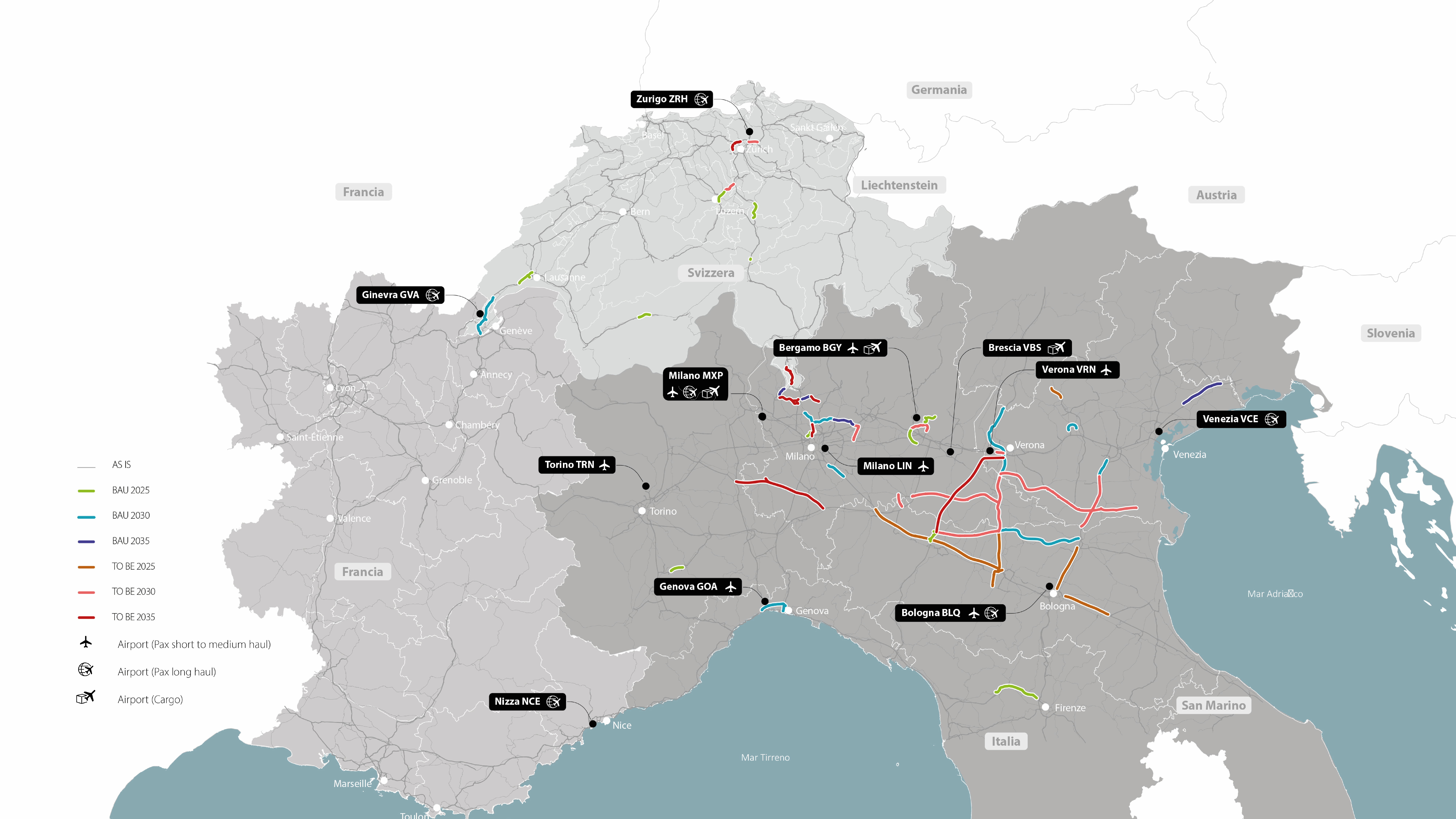The accessibility study at Milano Malpensa airport
An innovative methodology to support strategic decisions
Air accessibility is an essential factor for the development of any advanced economy – the globalisation process has extended the social and economic context making maintenance of stable and significant contacts necessary to most of the world. The air accessibility of an airport is inescapably linked to landside accessibility, which is also a decisive element for its development prospects. From this perspective, the fulfilment of infrastructural operations moving towards guaranteeing better accessibility to airports and the strengthening of airports in extensive consolidated basins of traffic are an element that generates benefits to the system, causing significant growth in both passenger and goods traffic. In other words, landside accessibility is a qualifying element in the development of every airport and the growth of its air accessibility.
The general aim of the study developed by NET Engineering and the Politecnico di Milano for Milano Malpensa airport was to create a support tool for decisions assessing the impact that work on the carrier traffic network may have on accessibility to Malpensa airport compared to competitor airports and the three sectors of demand – long-distance passengers, medium-short distance passengers and goods. Therefore, the tool is a formidable database for careful analysis of the impact that the construction of the individual infrastructural works, or their functional adaptation, may cause to accessibility in a study area of Northern Italy, Southern France and Switzerland. The study deals with the topic on three timelines – 2025, 2030 and 2035 – for which the evolution of the demand for movement was estimated, also correlated with the increase in the capacity of the airport.
The innovative methodology marking the project was developed with the scientific co-ordination of the Politecnico di Milano, applying evolved algorithms estimating incoming and outgoing accessibility based on socio-economic indicators and network performance referring to extremely detailed zoning. The development of the analysis was divided into three stages, referring specifically to the indication of the reference context and its characterisation:
- Identification of the study area
- With an extension to circumscribe the relevant airports (Bergamo, Bologna, Brescia, Geneva, Genoa, Milan Linate, Nice, Turin, Venice, Verona and Zurich) and correctly represent the mobility aspects in the study;
- Analysis of programmatic framework
- A reference for the division of the scenarios following timelines and the type of operation in terms of conformation, maturity of the project, financing, etc.;
- Definition of the relevant operations
- Selection of only the modifications to the current road network that, based on proximity criteria, hierarchic level of the road concerned and level of financing reached, could have an effectively relevant impact on the accessibility indicators studied.

Thus, the project saw NET Engineering work with the client in the delicate process of stakeholder engagement. The discussion with the municipal and regional administrations, the collection, study and understanding of their doubts, finding an answer and a solution to those problems, and constant sharing of the planning choices and led to the definition of a specific management approach and project management appreciated by both the client and the other parties involved.

